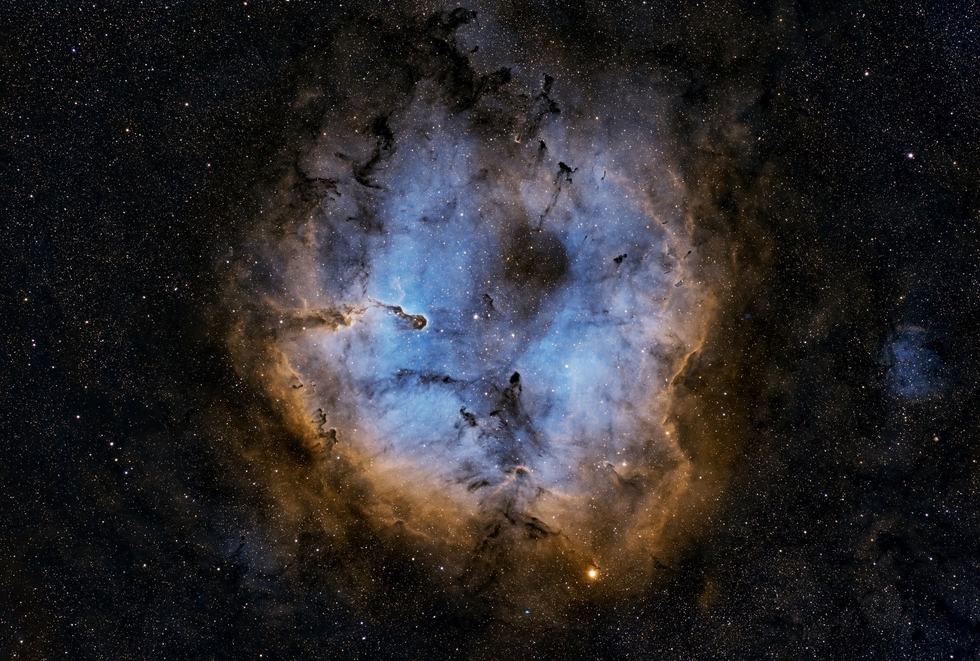IC 1396
IC 1396
IC 1396 is a very sparse open cluster associated with a large diffuse nebula, visible in the northern constellation Cepheus; it is located in a stretch of the Milky Way partially obscured by dense banks of dark nebulae, in a galactic region rich in neutral dust and gas with associated young and hot blue stars. The gases of the nebula complex of IC 1396 are excited by the stellar wind of the blue giant HD 206267, belonging to the Cepheus OB2 association. It seems that the expansion of this H II region created a large ring of molecular gas with a radius of about 12 parsecs, over a period of at least 3 million years. The ring structure extends for about 3° and is surrounded by a large number of dark blood cells, inside which the formation of new stars probably takes place due to compression by ionization, the shock wave front of stellar winds and radiation pressure; The largest blood cells are located on the northwestern side of the nebula region. In the eighties, 32 globules were identified, which received a numerical designation from 1 to 32 with the prefix GRS (Globules of Radial Systems); four radial systems of globules have been identified near IC 1396, while one of these is centered exactly on the nebula. Among the blood cells there is also the famous structure known as the Elephant trunk (see B 142). In the infrared, on the other hand, research has been conducted for the localization of young stellar objects associated with blood cells; It was thus discovered that only six sources associated with globules have a structure and luminosity such that they could have been caused by external heating, while most of these would not be related to star formation phenomena. In 2005, through a near-infrared study, 25 blood cells were identified, of which four had not been reported in the SIMBAD catalog; For all but four blood cells, it was possible to determine the mass, while it was not possible to measure the diameter for seven of them. Five globules contain a rich population of objects with reddened light, probably stars in formation; These five globules have the highest extinction rate, which would suggest a relationship between the intensity of star formation activity and the mass of the globules themselves. In blood cells with the smallest mass, star formation is often believed to be influenced by the radiation pressure of a bright star nearby; in a study conducted on one of these, illuminated by the bright blue giant HD 206267, a link with the distance of this star was highlighted, suggesting that evaporation due to photoionization affects the distribution of the mass of the blood cell around the blue giant. The influence of the star is given by the compression of the gases by the radiation pressure.
SPECIFICATIONS
Telescope
SPA-1-CMOS
Camera
QHY 600M
Location
IC ASTRONIMY OBSERVATORY, SPAIN
Date of observation
BUNDLE
Filters
SHO
Processing
Pixinsight and Photoshop
Credits
Credit Sauro Gaudenzi / Data Telescope Live


